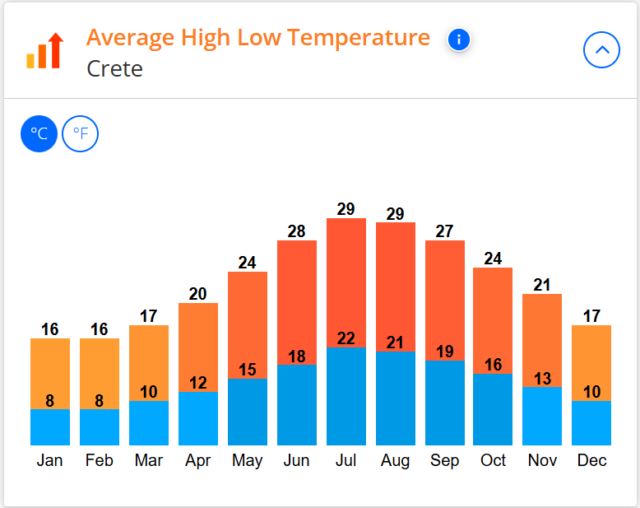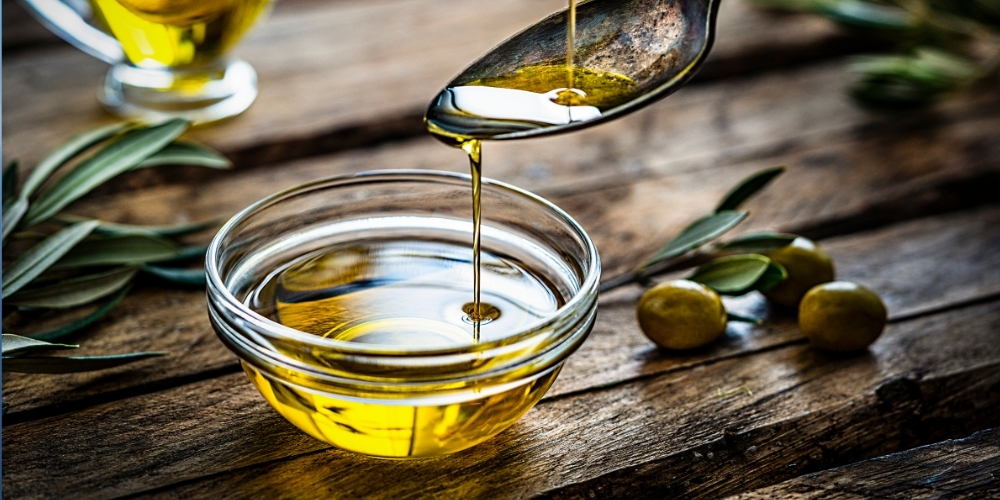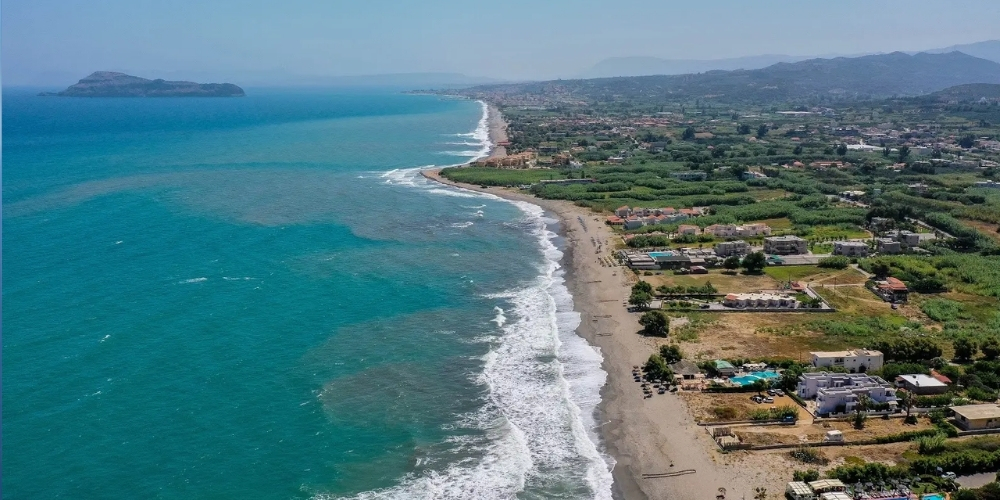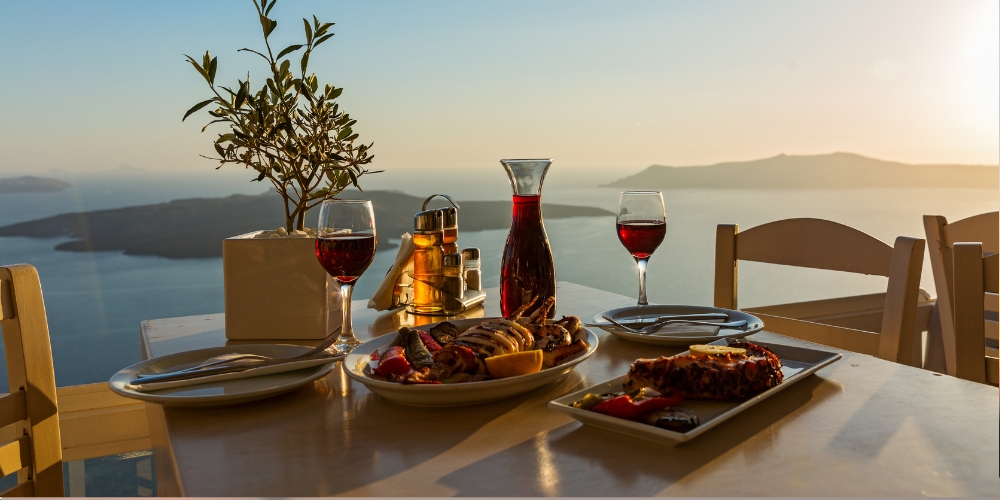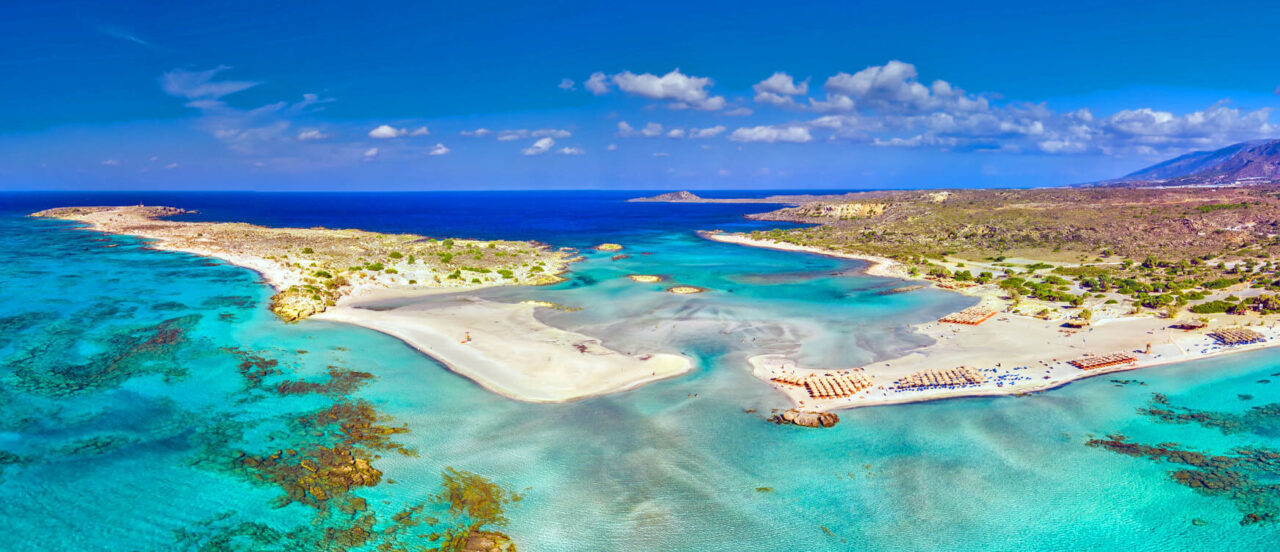JUST HOW HOT IS CRETE? THE BURNING QUESTION!
The common perception amongst UK holidaymakers, especially seniors, is that ‘Crete is too hot to visit in July and August’. Upon closer inspection of average temperature statistics, the variation between daily average temperatures from June thru’ September is only a matter of 2°C. What is the reality and, if there is a misconception, how and why has it occurred?
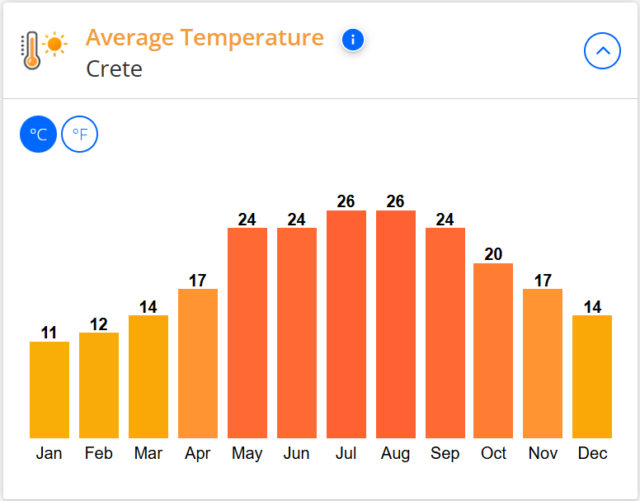
THE LATITUDE OF IT ALL
Maleme, where Hotel Mistral is located, sits a little over 35° North of the equator. So that’s some way from where the tropics start at 23.5° North. In classic climatology terms Crete in general has a ‘Mediterranean Climate’ which means comparatively hot dry summers and mild, wetter, winters. You can see from the chart above that overall the average temperatures are around the mid 20s.
THE HIGHS AND LOWS OF IT ALL
Of course monthly averages are a combination of the varying daily temperatures. Our second chart shows perhaps more realistic figures in holiday terms in showing the likely maximum and minimum daily ‘highs’ you can expect. But even this demonstrates that temperatures mostly stay below 30°C. In comparison in the ten summers between 2011 and 2022 temperatures reached 34° in seven of the years. In the last five years temperatures have exceeded 35°C on five occasions. Whilst 2024 was the coolest UK summer since 2015, the mercury touched 34.8°C on 12th August. We’re not suggesting you escape to Crete to cool off, but at least you know what to expect and won’t get any surprises.
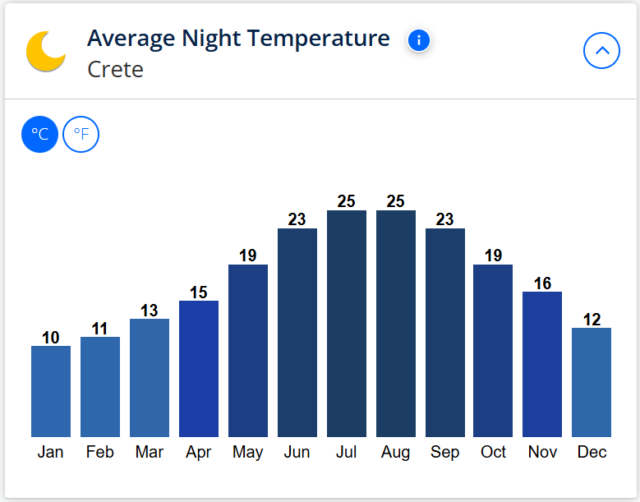
HOT SUMMER NIGHTS
One of the greatest joys of Crete is being able to eat al fresco under the moon and stars at night. You’ll see from the graph above that the nighttime low doesn’t vary much from the daytime high, perfect for dining in tee-shirts and sleeveless dresses and sleeping au nature. It’s also ideal weather to boogie away on the Mistral dance floor without overheating – although cooling beverages are always available at the bar!
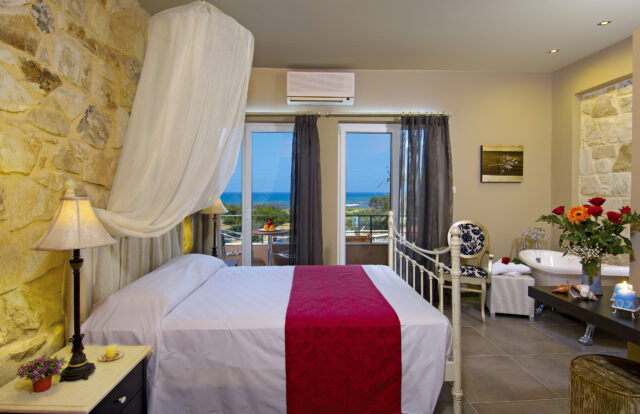
COPING WITH THE HEAT AT THE MISTRAL
Naturally some days are hotter than others and the temperature can creep above the seasonal norm. But all the rooms at the Mistral have air-conditioning so if you ever get too hot all you need to do is slip back inside out of the sun and dial-up the air-con. Set it at night to the temperature you prefer and sleeping should never be a problem. Alternatively during the day slide into one or other of our two pools to cool down – actually now the front pool will have Roman Steps it will be easier than ever. You’ll also find a pleasant onshore breeze blowing in off the sea and plenty of places to sit in the shade with a cold drink – remember everyone gets a recyclable water bottle to keep filled with cold fresh water to prevent dehydration.
PREFER YOUR TEMPERATURES IN OLD MONEY?
Many of us still struggle to think practically about how centigrade translates to ‘proper heat’ in old money! So here’s a clue:
20°c = 68°f which is about normal room temperature
25°c = 77°f which most people feel is the start of a comfortable swimming pool water temperature
30°c = 86°f many people think this is hot but, actually, it’s not even normal skin temperature
37°c = 96°f which is normal skin/body temperature
Much of what we call the ‘sensible’ temperature, that is the temperature you ‘sense’ or feel, depends on humidity. High humidity prevents the body from cooling down through sweating. The ‘hot, dry, summer climate’ in Crete means that humidity is low and, especially with the local on-shore breeze, it’s relatively easy to keep cool.





